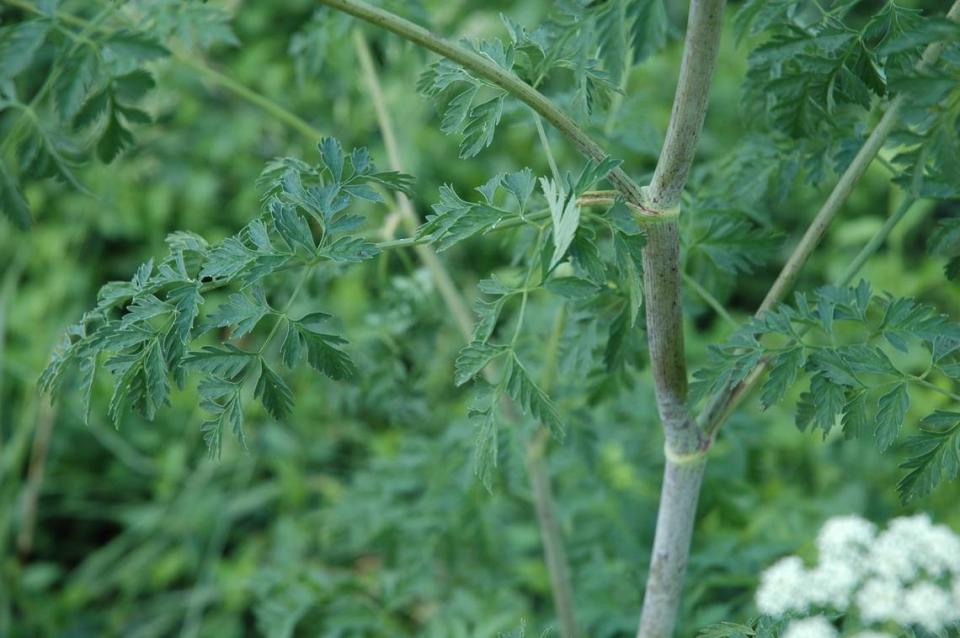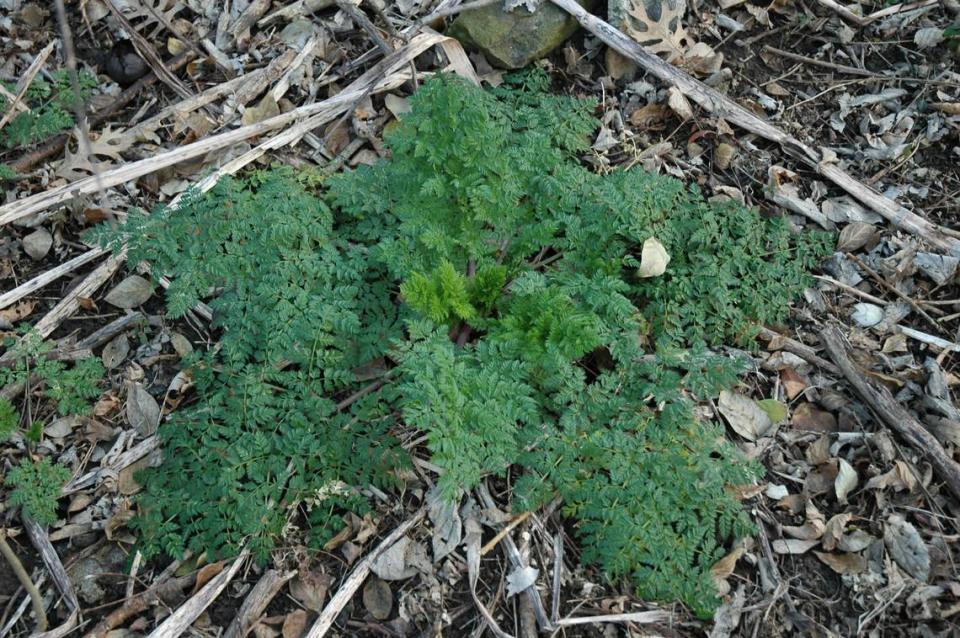This poisonous plant is blooming in Kentucky. Here’s what you need to know.
A pretty plant with delicate white flowers is blooming around Kentucky right now, but it is not one you’ll want to encourage in your garden.
Poison hemlock, which as its name suggests is toxic, is being seen more and more in the Bluegrass. Ingesting the weed can be fatal to animals and humans, and history says it is what was used to poison the Greek philosopher Socrates.
J.D. Green, extension weed scientist at the University of Kentucky, said poison hemlock has been in Kentucky since before he began his career 40 years ago, but “I’m seeing more and more of it around.”
Warnings about the weed are circulating on social media, as more people take notice of it.
Green said a county extension agent sent him a photo last week of poison hemlock that someone had staked in their yard, presumably because of its pretty appearance.
But Green said toxicity is a real concern.
He said he got a call earlier this spring from a woman who had poison hemlock on a property adjacent to hers, and she was worried about children playing in the area and possibly consuming it.
“It’s probably a rarity that that would happen,” he said, “but it is a concern.”
He said he knew of a man years ago who lost three or four buffalo to poison hemlock.
“We occasionally do have poisonings of animals,” Green said. “It doesn’t take a lot of it to really kill an animal.”
Green said cattle, sheep and other livestock will usually avoid eating poison hemlock when there are other things for them to graze on, but if it is cut and baled into hay, that increases the potential for exposure.
Green said poison hemlock is in its peak blooming season in early June. In a few weeks, the blooms will begin to fade.

Poison hemlock has fern-like leaves and small white clusters of flowers that form an umbrella shape resembling Queen Anne’s lace, but Green said hemlock can be distinguished by its smooth stems with purple blotches on them. Queen Anne’s lace has hair on the stems and petioles, which attach the leaf to the stem, he said.
At this point, Green said spraying larger poison hemlock plants might not be a good idea for farmers. It will kill the plants but also make them more attractive to animals.
He said mowing or cutting the plant down if it grows in fence rows is also an option, but “it needs to happen before it flowers” and produces seed, he said.
Spraying should be done early, before the plant sends up its flower stalk, Green said, but that can be challenging because it is not as easy to see. In the early growth stages in the spring and fall, Green said the plant grows in the shape of a rosette.

“The key to spraying it is learning what it looks like when it’s very young,” he said.
Green pointed out that social media posts warning about another potentially dangerous weed, giant hogweed, sometimes make the rounds this time of year. Like poison hemlock, it also has white flowers similar to Queen Anne’s lace and purple splotches on the stem.
While Green said consumption is the main concern with poison hemlock, giant hogweed can cause problems for those who simply brush against it, according to the USDA. “The sap, when combined with moisture and sunlight, can cause severe skin and eye irritation, blistering of the skin, scarring and even blindness,” according to the agency.
Green said that to his knowledge, giant hogweed does not grow in Kentucky, but he said he sometimes gets inquiries from people confusing it with poison hemlock.
The Maine Department of Agriculture, Conservation and Forestry’s website offers information that may be helpful in identifying poison hemlock, giant hogweed and similar-looking plants.

